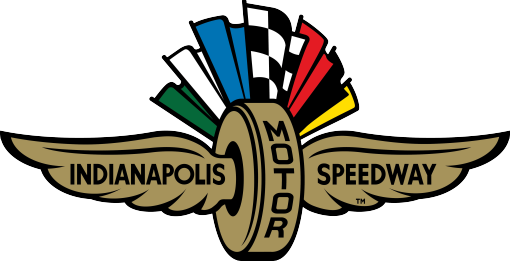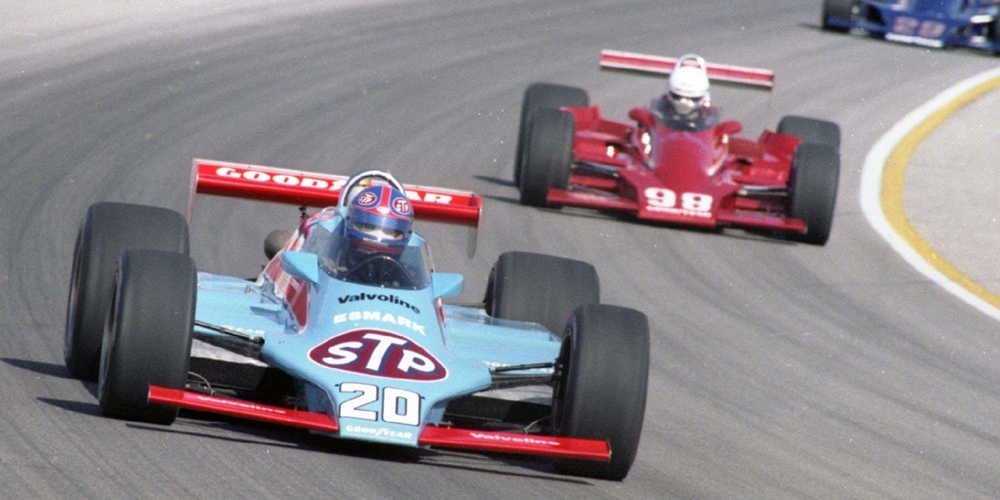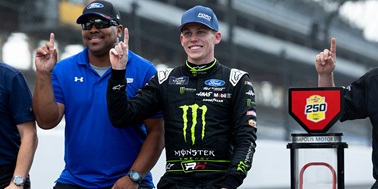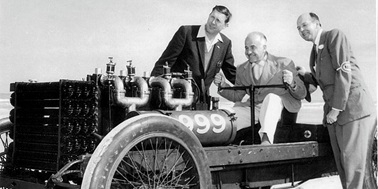1980
Rarely has a driver gone into a “500” so clearly favored to win as was Johnny Rutherford in 1980. Driving a John Barnard–designed Jim Hall Chaparral, he scored his third Indianapolis 500 win by starting from the pole (also for the third time) and cruising to victory over Tom Sneva.
It was the third runner-up finish in four years for Sneva, who, because he had totaled his originally qualified car in practice, had been required to start with a “backup” car in the 33rd and last position. Also moving forward from the last row was Gary Bettenhausen, who, driving a four-year-old car serviced by a “pickup” crew of friends, ended up a very popular third.
Johnnie Parsons, celebrating the 30th anniversary of his “500” win, had the distinction of being the first pace car driver ever to lead a field which included his own son.
1981
A major controversy resulted with the winner of the 1981 “500” not made official until more than four months after the event.
Although Bobby Unser pulled into Victory Circle at the conclusion of the race, subsequent review by the officials of Unser’s aggressive method of returning to the track following a 149th-lap pit stop led them to docking him one position and giving the win to Mario Andretti.
A protest was filed by Unser’s Penske team, and it was not until 138 days later, on Oct. 8, that an arbitration committee finally overturned the official’s decision and returned the win to Unser, with Andretti second. It was an otherwise extremely competitive event, with a near-record 24 lead changes taking place between eight drivers.
1982
It was the greatest and closest finish in the history of the Indianapolis 500 at the time. Gordon Johncock had been leading pole-sitter Rick Mears by a matter of yards at the 183rd-lap mark when Mears went in for his final pit stop. It was completed in 18 seconds.
Three laps later it was Johncock’s turn, and to everyone’s amazement Johncock’s stop was completed in only 13 seconds. Instead of giving him a full load of fuel, his crew had cleverly saved precious seconds by giving him only the amount they knew he would need to finish.
But it wasn’t over yet.
Mears began to slash away at Johncock’s 11-second advantage, carving it to just a few feet with one lap to go. They drew level at the entrance to turn one but Mears had to back off, with another desperate attempt at the checker falling short by a margin of just 0.16 seconds.
1983
It appeared as if Al Unser was about to join A.J. Foyt as a four-time winner of the “500” in the closing stages, and his own son, Al Unser Jr., doing his level best to assist.
Several laps behind, but placed on the track between his father and Tom Sneva, the very impressive 21-year-old rookie strategically moved to the left on the long straights for several consecutive laps in such a way as to “disturb the air” for Sneva and make it difficult for him to pass.
Sneva finally saw an opening with 10 laps to go and was able to vault past both father and son—the first ever to compete against each other in the same 500—and score a very popular win after having been runner-up three times.
1984
Just as the stage was set for a classic shoot-out to the finish between Rick Mears, who was leading, and defending winner Tom Sneva, who was running second, it all came to an end.
Shortly before a late-race caution was about to end, a fellow competitor, Al Holbert, pointed out to Sneva that sparks were flying from the rear end of his car. A half shaft had broken and Sneva was out at 168 laps.
From there, Mears cruised to his second win with a two-lap advantage over rookie Roberto Guerrero, the latter sharing Rookie of the Year honors with second-generation driver Michael Andretti.
Sneva obliterated the qualifying records by steadily improving from 209.113 mph on his first lap all the way up to 210.029 mph. He broke five track records in four laps.
1985
This was one of the best-remembered "500s" ever as charismatic Danny Sullivan executed his never-to-be-forgotten "spin and win."
It was on the fateful 120th lap when, after running behind Mario Andretti for several laps, Sullivan moved to the inside and took the lead through turn one. He promptly spun across the south "short chute" and was narrowly missed by Andretti, who instinctively moved to the inside.
Both cars pitted during the resulting yellow and, amazingly, Sullivan had not even flat-spotted his tires. Twenty laps later, and running with a fresh set, he tried exactly the same move in exactly the same place and this time was successful, winning by a narrow margin over Andretti.
1986
This was a tremendously emotional victory for Bobby Rahal, whose car owner and longtime backer, the popular Jim Trueman, was extremely ill and would succumb to cancer only 11 days later.
Just minutes earlier, it had appeared that Kevin Cogan was destined to win. Cogan had come up to pass both Rahal and Rick Mears before Arie Luyendyk spun six laps from the end, hitting the inside wall at the entrance to the pits and bringing out the caution.
While the race could well have finished “under the yellow,” the safety crew had the track cleared in time for a restart with two laps to go. Rahal, running second, was able to beat Cogan to Turn 1 and he turned his final lap at 209.152 mph, at that time the fastest lap ever turned in competition.
1987
Rarely was there a "500" with more changes of story line in the closing stages than in 1987.
Pole-sitter Mario Andretti led for 170 of the first 177 laps and appeared headed for a second "500" win, only to have electrical trouble sideline him after 180 laps. Roberto Guerrero (second, third and fourth in his only three previous starts) took over, but a leaking master cylinder caused his car to stall on his final stop.
Into the lead and on to victory went Al Unser, whose name did not even appear on the entry list in the program. At liberty after Team Penske released him in favor of Danny Ongais, Al was suddenly back in the picture just before the final weekend of qualifying when Ongais, who had crashed in practice the week before, could not obtain the medical release necessary to drive.
With Penske teammates Rick Mears and Danny Sullivan having switched to hurriedly prepared year-old March chassis, the only way to supply one for Al was to retrieve a show car from the lobby of a Pennsylvania hotel.
1988
The Roger Penske team of Rick Mears, Danny Sullivan and Al Unser pulled off something never before achieved, as, for the first time ever, one team occupied the entire front row.
The team was hardly less dominant during the race itself, these three drivers sharing the lead between them for all but eight of the 200 laps. Sullivan appeared well on his way to a repeat of his 1985 win until an accident sidelined him just after the halfway mark. He had led all but three of the first 94 laps.
Mears pretty much had the race in hand from that point on, scoring his third of four wins. The only non-Penske driver to lead was Scotsman Jim Crawford, who had become a great crowd favorite during practice due to his persistence in overcoming severe foot and ankle injuries sustained the year before. Difficulty in changing a wheel by his crew on the final stop dropped Crawford’s V6 Buick–powered car to sixth place.
1989
The 1989 “500” ended with one of the most dramatic moments ever, Emerson Fittipaldi and Al Unser Jr. actually touching wheels while battling for the lead with just over a lap to go.
Unser had been able to take the lead just five laps from the end by staying out on the track under a late-race caution period, while leader Fittipaldi ducked in for a splash of fuel. Fittipaldi tore after Unser as soon as the green was displayed for the final time, catching him on the backstretch of their 199th lap.
The pair were side by side and lapping cars as they entered turn three, whereupon they touched, sending Unser into the outer wall. The final lap began under the yellow flag with a dismayed Fittipaldi fearing for his friend’s safety.
Then, while rolling slowly behind the pace car toward Turn 3, he was astonished to see young Unser standing out next to the track, grinning at him and displaying a “double thumbs-up.”
A huge purse of $5.7 million awaited the participants, the winner’s share alone exceeding $1 million for the first time.




